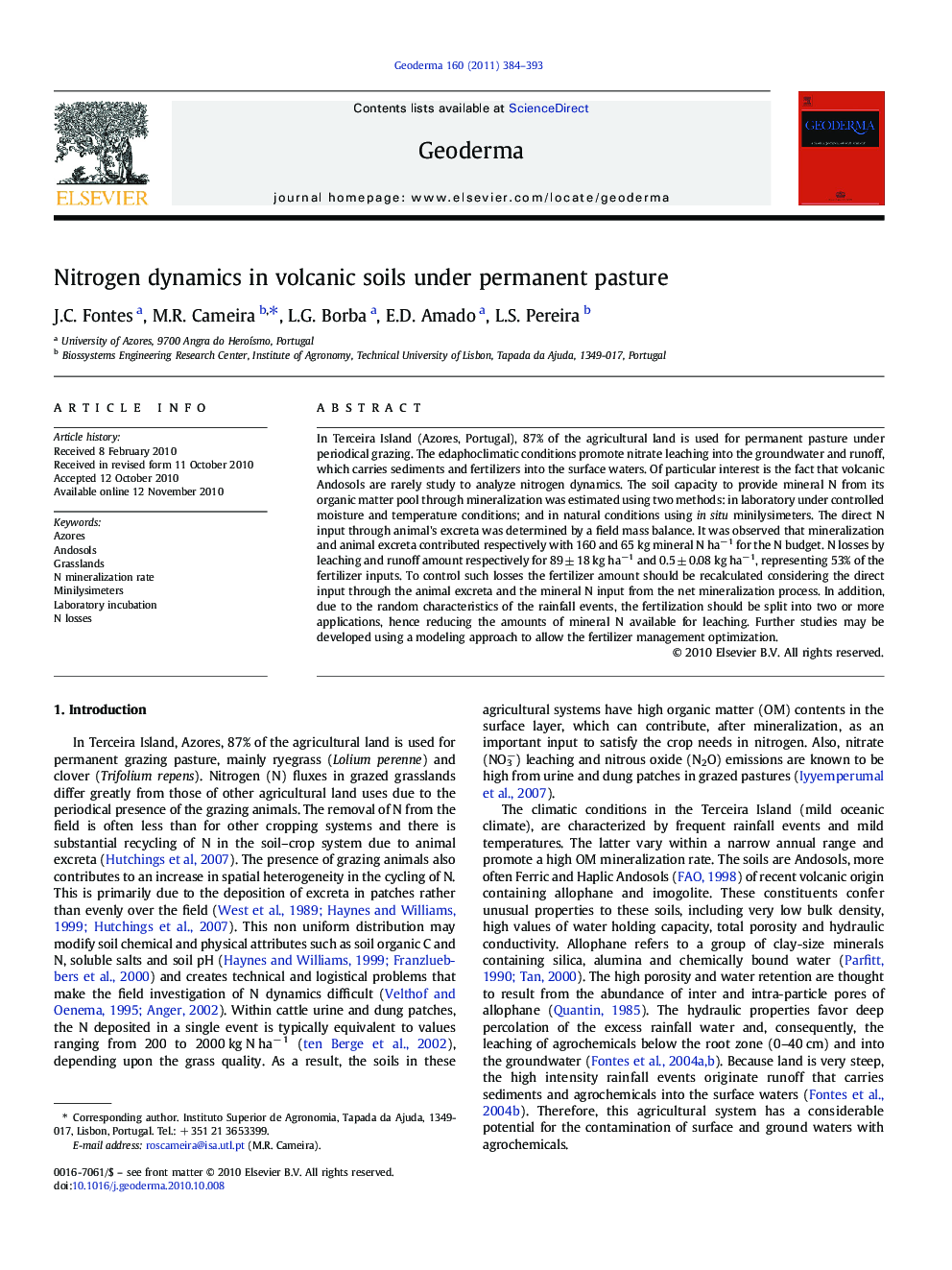| Article ID | Journal | Published Year | Pages | File Type |
|---|---|---|---|---|
| 4574254 | Geoderma | 2011 | 10 Pages |
In Terceira Island (Azores, Portugal), 87% of the agricultural land is used for permanent pasture under periodical grazing. The edaphoclimatic conditions promote nitrate leaching into the groundwater and runoff, which carries sediments and fertilizers into the surface waters. Of particular interest is the fact that volcanic Andosols are rarely study to analyze nitrogen dynamics. The soil capacity to provide mineral N from its organic matter pool through mineralization was estimated using two methods: in laboratory under controlled moisture and temperature conditions; and in natural conditions using in situ minilysimeters. The direct N input through animal's excreta was determined by a field mass balance. It was observed that mineralization and animal excreta contributed respectively with 160 and 65 kg mineral N ha−1 for the N budget. N losses by leaching and runoff amount respectively for 89 ± 18 kg ha−1 and 0.5 ± 0.08 kg ha−1, representing 53% of the fertilizer inputs. To control such losses the fertilizer amount should be recalculated considering the direct input through the animal excreta and the mineral N input from the net mineralization process. In addition, due to the random characteristics of the rainfall events, the fertilization should be split into two or more applications, hence reducing the amounts of mineral N available for leaching. Further studies may be developed using a modeling approach to allow the fertilizer management optimization.
Research Highlights►Laboratory and in situ estimations of OM mineralization are statistically different. ►Soil organic matter pool provides 160 kg mineral N ha−1 in six months. ►Direct input of ammonium through the animal's excreta amounts for 65 kg N-NH4 ha−1. ►Nitrogen losses by runoff and leaching represent 53% of the fertilizer inputs.
